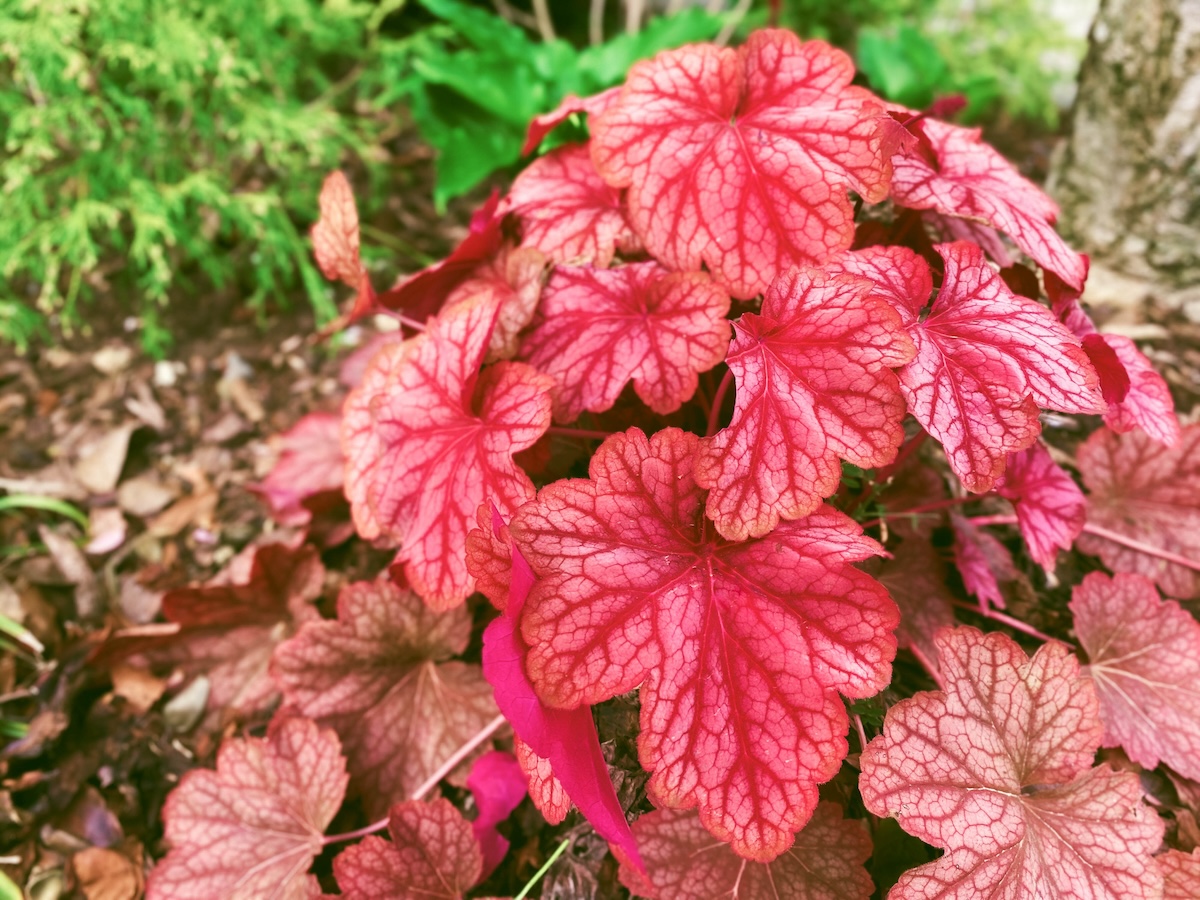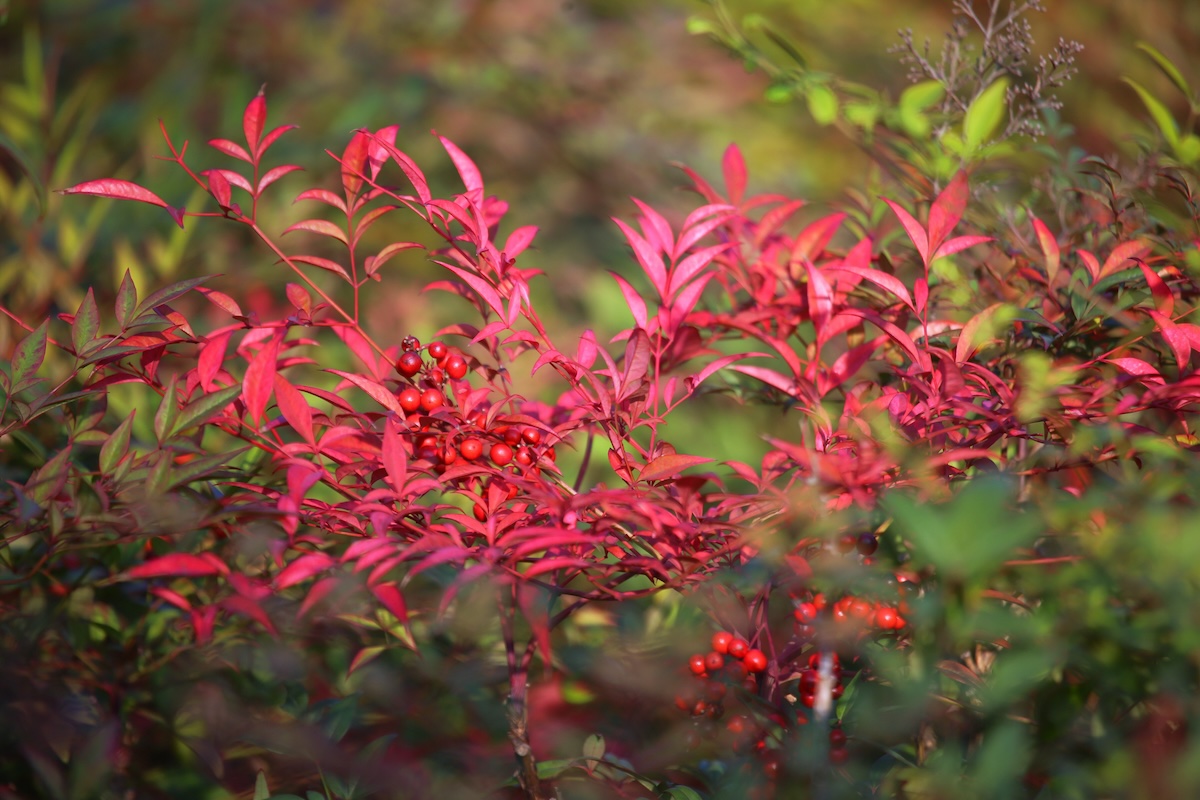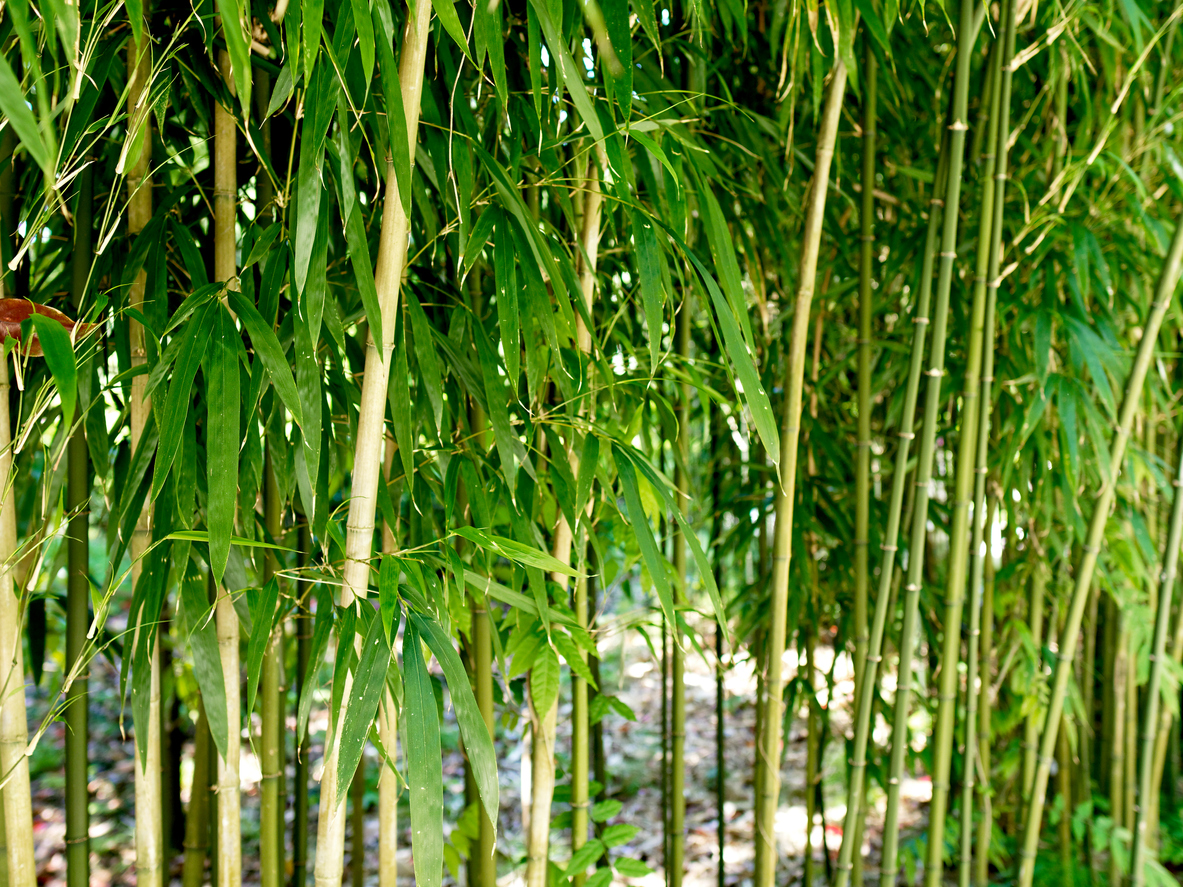We may earn revenue from the products available on this page and participate in affiliate programs. Learn More ›
The satisfaction a seasoned gardener enjoys is the result of patience, time, and experience: trial and error, taking some chances, watching things thrive—and sometimes watching them fail. But beginning gardeners need a few sure things, plants that are easy to grow and maintain, and that will give them the confidence to move on to greater challenges. Check out these 25 garden gimmes, practically guaranteed to bring lush beauty to the garden with minimal effort.
1. Coral Bells (Heuchera spp.)

Once established, coral bells require very little maintenance and will return year after year with a mounding party of colorful foliage. Hardy in zones 4 through 9, these perennials produce spikes of bell-shaped flowers that come in reds, greens, yellows, oranges, purples, and even variegated varieties. While the blooms arrive in June, the leaves will make an impression from early spring through frost. Considered shade-tolerant, coral bells can do well in sun or shade, but check the plant’s requirements before planting in full sun. For greatest success, plant coral bells in well-draining soil, and don’t let them sit in water.
2. Heavenly Bamboo (Nandina domestica)

Nandina domestica, commonly called nandina or heavenly bamboo, is an easy-to-grow evergreen shrub that looks lush in a landscape. White flowers in spring give way in winter to brilliant red berries that make excellent cuttings for wreaths and holiday floral arrangements. Nandina will fill out and reseed itself, but this sturdy beauty can be pruned without worry. Hardy in zones 6 through 9, this slow grower is drought-resistant after it’s established. Note that the berries are toxic to pets and wildlife.
3. Marigold (Tagetes spp.)

As far as annual flowers go, marigolds offer one of the best bangs for the buck. After you put them in the ground, you can leave them alone and they’ll bloom until fall. Hardy and forgiving, marigolds tolerate most any soil condition and will even rebound after being nicked by the lawn mower. They thrive in zones 2 through 11, and while they love a sunny spot, they can tolerate some shade. Marigolds reseed themselves, so depending on your location, you may find marigolds popping up next spring. If you’re so lucky, dig them up and move them as you see fit to enjoy them for another season.
RELATED: 3 Reasons You Should Always Plant Marigolds in Your Garden
4. Canna Lily (Canna spp.)

For an impressive splash of summer color, canna lilies make a bold statement. Bright red, orange, or yellow blooms top lush foliage that reaches 6 feet, easily. These plants, which grow from rhizomes, will multiply each year and are easy to divide and share with friends and family. For the best bloom, plant canna in sheltered spots in rich, well-drained soil in full sun. They’re winter hardy in zones 8 through 11; in colder regions, dig plants up before the first frost for replanting in the spring.
5. Rosemary (Salvia rosmarinus)

Rosemary is a perennial herb that remains evergreen in zones 8 and above. Its woody stems and fragrant leaves complement many other plants common in landscape designs. For effortless growing, plant rosemary in well-drained soil in full sun and water it every week or so, letting the soil dry out between waterings. Rosemary blooms in early spring and can be pruned all year to provide herbs for your culinary creations.
6. Meadow Sage (Salvia nemorosa)

This deer-resistant perennial is easy to care for and rewards the beginning gardener with long-blooming deep purple flowers. The plant, hardy in zones 3 through 8, carries a distinctive fragrance and is both drought-tolerant and deer-resistant. Meadow sage is a favorite plant of hummingbirds and bees, and will become a favorite of yours as you watch it come back year after year.
7. Catmint (Nepeta spp.)

This nonculinary mint variety is a showy perennial that will bring pleasure to you—and your cat—for years to come. Blooming in early spring, it is easy to grow and tolerates both heat and drought. Catmint is hardy in zones 4 through 8, does well in full sun through part shade, and will attract bees and other useful insects to your yard. Best of all, you don’t need to do a thing for it, although if you prune the flowers after they’re spent, you may get another show later in the season.
8. Golden Bell (Forsythia spp.)

The brilliant yellow shock of blooms on the forsythia bush is one of the first signs of spring. Once the show is over, this shrub displays attractive green foliage. Hardy in zones 4 through 9, forsythia will flower most successfully when planted in full sun. This popular shrub can be pruned into a hedge or left natural; the bush’s arching shape (and overall health) can be enhanced by cutting back woody branches at the base. Whether maintained as a hedge or a riotous fountain, this popular shrub will reliably bring joy to your yard every spring.
9. Creeping Phlox (Phlox stolonifera)

Grown easily over rocks and in tough soil conditions, creeping phlox, a perennial that’s hardy in zones 5 through 9, presents a carpet of gorgeous blooms in early spring, just when you’re really craving color in the yard. Flowers come in white, pastels, saturated hues, and even candy stripes. Well-draining soil and plenty of sun are the keys to success, although the plant can tolerate partial shade. Phlox spreads but is not invasive, making it ideal for an easy and satisfying ground cover.
10. Indian Hawthorn (Rhaphiolepis indica)

Low and slow growing, Indian hawthorn is the perfect shrub for sunny spots in your landscape. It has a naturally rounded growth habit, and so needs little pruning. While this bush thrives in moist, well-drained soil, it’s drought-tolerant once established. In spring, attention-grabbing clusters of pink or white blooms give way to blue berries that attract birds and other small wildlife. It’s winter-hardy in zones 8 through 11; it’s evergreen, too, so it will provide year-round interest in your garden.
11. Autumn Joy Sedum (Hylotelephium spectabile ‘Autumn Joy’)

A hardy perennial, the Autumn Joy variety of sedum is an easygoing showstopper that’s hardy in zones 3 through 10. The drought-tolerant plant has sturdy shoots bring forth deep burgundy flowers in late summer and autumn. When the weather turns cold, you can leave sedum stalks standing to provide food for birds throughout the winter. Or, simply cut them to the ground once they’ve flagged, and wait for them to burst out again next spring.
12. Dusty Miller (Senecio cineraria)

Dusty Miller, with its lacy, silvery white leaves, makes a wonderful companion to many plants in the garden. Once established, it requires little care and will happily tolerate heat and drought. It can create a beautiful border around taller plants like salvia, or just as easily provide a lush backdrop for shorter plants like ageratum. Dusty Miller is considered an annual, but has been known to come back year after year in warmer climates (typically zones 8 and higher).
13. Gold Thread Cypress (Chamaecyparis pisifera ‘Gold Thread’)

There’s a reason Gold Thread cypress is a favorite among landscapers: It does a lot of work and asks almost nothing in return. Evergreen, and a great foundation shrub for zones 5 through 8, it is a slow grower, requiring little to no pruning. Its threadlike needles provide textural interest in the garden, and its rich golden hue contrasts beautifully with the more traditional greens of surrounding plants. This shrub tolerates heat and drought well and rewards you all year long with eye-catching, weeping gold foliage.
14. Hosta (Hosta spp.)

For easy-care ground cover in shaded areas, you can’t beat hostas. With hundreds of varieties, from green to gold to variegated, there’s a hosta to suit any taste and practically any region of the United States, from zones 3 through 8 or 9. While they’re known as shade plants, a number of hostas—generally those with yellow or gold foliage—tolerate some sun without sacrificing their coloration. Relatively disease-free, once established, hostas will grow and continue to come back for years, making these lush beauties a welcome addition to any garden.
15. Lamb’s Ear (Stachys byzantina)

Called lamb’s ear for its soft, fuzzy foliage, this stalwart perennial, hardy in zones 4 through 10, will grace your garden as a border or ground cover. Though mostly valued for its low-growing, matlike foliage, it sends up spikes of purple flowers in spring. Once established, lamb’s ear requires little maintenance, has modest water needs, and isn’t picky about soil, although it should be planted in well-drained locations. As with all flowering plants, it’s best to deadhead blooms once they’re spent, but lamb’s ear will keep on going either way.
RELATED: 20 Flowers That Attract Bees to Your Garden
16. Creeping Jenny (Lysimachia nummularia)

Creeping Jenny is a delightful and hardy ground cover (plus, it’s great for window boxes) that grows equally well in sun and shade. It will rapidly spread to fill empty areas with a lush carpet of bright green or yellow, with small yellow flowers appearing in summer. If the foliage of your Creeping Jenny looks tired, or if the spread seems too aggressive, feel free to do some pruning—or not. It will still return year after year in zones 2 through 10.
17. Knock Out Roses (Rosa ‘Radrazz’)

The Knock Out variety of roses lets gardeners of any skill level, working with soil of any type, enjoy dazzling blooms. Knock Out roses, which are hardy in zones 5 through 9, can be planted individually or as a colorful hedge. They bloom all summer long and well into fall with no special care. While they will perform best if pruned after the last frost, they’ll come back year after year, even if you don’t. If you do decide to cut them back for shaping purposes, do it any way you like—the plant won’t mind!
18. Creeping Juniper (Juniperus horizontalis)

If you’re in need of a low-growing ground cover that thrives on neglect, creeping juniper will be your best friend. It will adapt to most any soil and is extraordinarily hardy, succeeding in zones 3 through 9. The ultimate in low maintenance, this slow-growing, long-lived evergreen makes an excellent foundation or border plant, and never needs pruning.
19. Coreopsis (Coreopsis spp.)

Coreopsis, which is also called tickseed, is a part of the Asteraceae family and grows in a variety of heights and colors. For the best bloom, plant it in well-drained soil with full sun, although partial sun will do the trick too. Once established, perennial varieties will come back year after year to blanket your flower beds with cheerful, delicate flowers and wispy foliage.
20. Daffodils (Narcissus pseudonarcissus)

How many new homeowners have moved into a house, ignored the yard while settling in, and been treated to a host of golden daffodils come spring? These cheerful heralds of warmer weather keep coming back even if neglected. Deer- and rodent-resistant, bulb plants like daffodils just need occasional watering during the growing season and can safely be ignored during periods of dormancy. Resist the urge to cut back foliage when blooms fade, as this can weaken the bulb. Instead, pull or prune leaves at the end of the season after they have turned dried and brown. To increase the vibrancy of the flowers, you can treat them seasonally with bone meal. Even if you don’t, these flowers will continue to return each year.
21. Lily of the Valley (Convallaria majalis)

Plant one lily of the valley and it will quickly spread via rhizomes to fill in around the base of a shaded tree, sloped yard, or neglected garden bed. All it asks in return for its attractive bell-shaped blooms is moist, well-drained soil and some shade. These perennials flourish in zones 3 through 7 and make fine companions for other shade lovers like ferns and hostas. Keep lily of the valley out of reach of cats and dogs, as all parts of the plant are toxic.
22. Liriope (Liriope spp.)

Also known as monkey grass, liriope provides evergreen color, seasonal flower spikes, and fall and winter berries. Drought-tolerant, deer-resistant, and practically disease- and pest-free, liriope is about as easy as they come and will spread to crowd out weeds and fill in bare spots with no effort from you. Just be sure to plant it in an area where you don’t mind it spreading, or be prepared to prune it back.
23. Bamboo (Bambusa spp.)

Ornamental bamboo can thrive in shaded parts of the yard, like against the house or fence. Many varieties of bamboo grow quite tall, making them ideal plants for a living privacy fence. While bamboo is easy to care for, it’s important to start with the right variety for your purposes. Make sure you pick one that does well in your USDA hardiness zone (some species are cold-hardy up to zone 5) and that has a growth habit appropriate for your yard. Be aware that some varieties of bamboo are invasive and should be grown in containers to prevent them from spreading where you don’t want them.
24. Mint (Mentha spp.)

Nothing endures like mint, even when you’d like to banish it from the backyard. This culinary herb, which is hardy in zones 3 through 8, can come back from almost anything, including an accidental shot of herbicide. If you aren’t planning on turning your yard into a mint farm, you may want to grow it in a container. If you do, however, know that any plant grown in a container will need more frequent watering than one planted directly in the ground.
25. Spotted Laurel (Aucuba japonica)

Like other laurels, spotted laurel is an easygoing evergreen shrub that works well as both a foundation plant and a hedge. It’s best planted in shade or part shade in zones 7 to 10, and thanks to its slow growth habit, it rarely needs pruning. Small flowers appear in spring on both male and female plants. If pollinated, female plants produce bright red berries in the fall. Spotted laurel’s real selling point, though, is its showy foliage of mottled green and gold.

